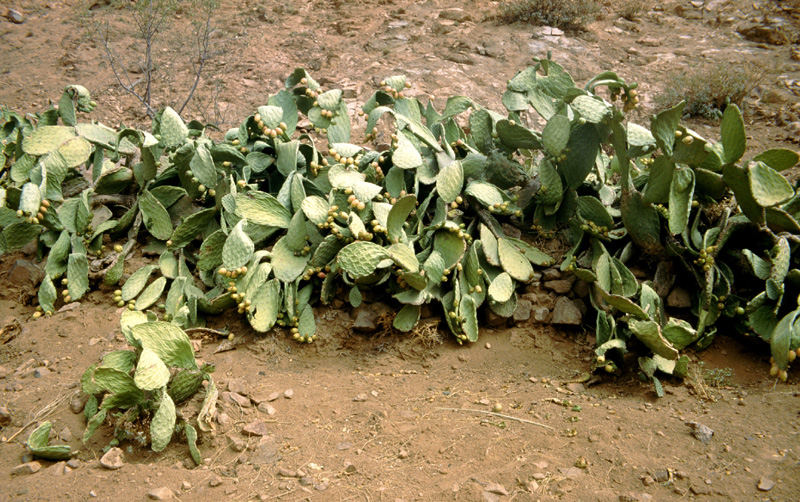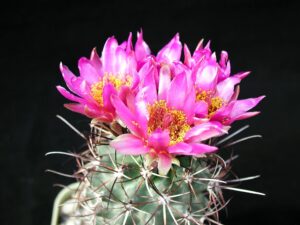Cacti, with their spiky exteriors and sumptuous oasis-like interiors, have long been a source of fascination for both wildlife and humans. Their ability to thrive in arid environments and provide sustenance in harsh conditions is noteworthy. One key question arises from their unique biology: Can you actually eat the fruit from a cactus? This inquiry opens the door to understanding not only the edibility of cactus fruit but also its remarkable properties, cultural significance, and nutritional value.
Though common in arid landscapes, it is surprising to many that cactus fruits—commonly known as prickly pears or tunas—are indeed consumable. With their colorful, sometimes vibrant hues of red, purple, or yellow, these fruits are not just aesthetically pleasing; they are packed with nutrients and flavor. Exploring their edibility may lead us beyond mere culinary use to unravel deeper reasons for our fascination with these resilient plants.
In this article, we will dissect various aspects of cactus fruit consumption, including identification, preparation, nutritional benefits, and cultural relevance. Each of these components contributes to a greater appreciation of the cactus and its role in various ecosystems, as well as its utility in human diets.
Identification and Varieties of Cactus Fruit
Identifying edible cactus fruit is crucial for safe consumption. The most recognizable type for eating is the Opuntia genus, commonly known as the prickly pear. These vibrant fruits grow atop the flat pads of the cactus, adorned with small clusters of spines or glochids. While the pads themselves, often referred to as nopales, are also edible, the fruits hold a special allure due to their succulent nature and sweetness.
There are several varieties of prickly pear, each contributing distinct flavors and textures. The most commonly encountered are the green, yellow, and red varieties—ranging from mild to tart. Before consuming them, it is important to ensure they are ripe. Ripe prickly pears tend to feel slightly soft to the touch and exhibit vivid colors, a sure sign of optimum sweetness.
In addition to prickly pears, other cacti like the saguaro and barrel cactus produce fruits that can be eaten, albeit less commonly. These fruits offer unique flavors, from tangy to sweet, but they often require more thorough preparation than their prickly pear counterparts.
The Art of Preparation: From Harvesting to Enjoyment
Harvesting cactus fruit can be an adventure, but caution is essential due to their spiny defenses. Gloves are necessary to avoid painful encounters with glochids, those tiny hair-like spines that can easily embed themselves in skin. After harvesting, the first step in preparation involves meticulously removing the spines. A sharp knife works well for this task, and some prefer to char the skin over an open flame briefly to burn off any remaining spines.
Once cleaned, the fruit can be cut in half or quartered to reveal its succulent, jelly-like flesh. The seeds contained within the fruit can be eaten, though they add a crunchy texture that may not be appealing to all. Various preparation methods exist—from raw consumption to transformation into jams, syrups, or even salads. The preferred approach often depends upon individual tastes, but experiencing the fruit raw amplifies its inherent sweetness and essence.
Nutritional Benefits: A Hidden Treasure
Cactus fruit is garnering attention not solely for its culinary aspects but also for its impressive nutritional profile. Rich in vitamins and minerals, they are an excellent source of Vitamin C, which supports immune function and collagen production. Moreover, they are low in calories and provide a good amount of dietary fiber, making them an attractive option for those seeking a nutritious snack.
Additionally, prickly pears contain antioxidants known to combat oxidative stress, which could potentially reduce the risk of chronic diseases. Research indicates that consuming cactus fruit may help regulate blood sugar levels, presenting a fascinating option for individuals managing diabetes. Consequently, the fruit can serve as both a delightful treat and a functional food for overall health.
Cultural Resonance: Culinary Traditions and Beyond
The role of cactus fruit transcends the individual experience; it is deeply woven into the fabric of various cultures, particularly those in regions where cacti flourish. In Mexico, prickly pears are a beloved staple, celebrated in both traditional dishes and modern culinary innovations. From salsas and drinks to candies, their versatility is evident. Festivals centered on the harvest of cactus fruit highlight the community’s reverence for this valuable resource.
Beyond culinary applications, cactus fruit also appears in traditional medicine. Indigenous peoples have long used components of the cactus plant for their therapeutic properties, treating ailments ranging from digestive issues to inflammation. This rich history adds an additional layer of allure to the edible fruit, suggesting that its consumption may resonate with deeper cultural significance.
In conclusion, the fruit of the cactus is much more than a mere curiosity. It offers various health benefits, a range of culinary possibilities, and a connection to cultural practices that enhance our understanding of the plant. As we delve into the world of cactus fruit, we uncover a treasure trove of flavors, nutrients, and history, reaffirming that this spiky plant holds a fascinating and delectable allure in the natural world.





Leave a Comment